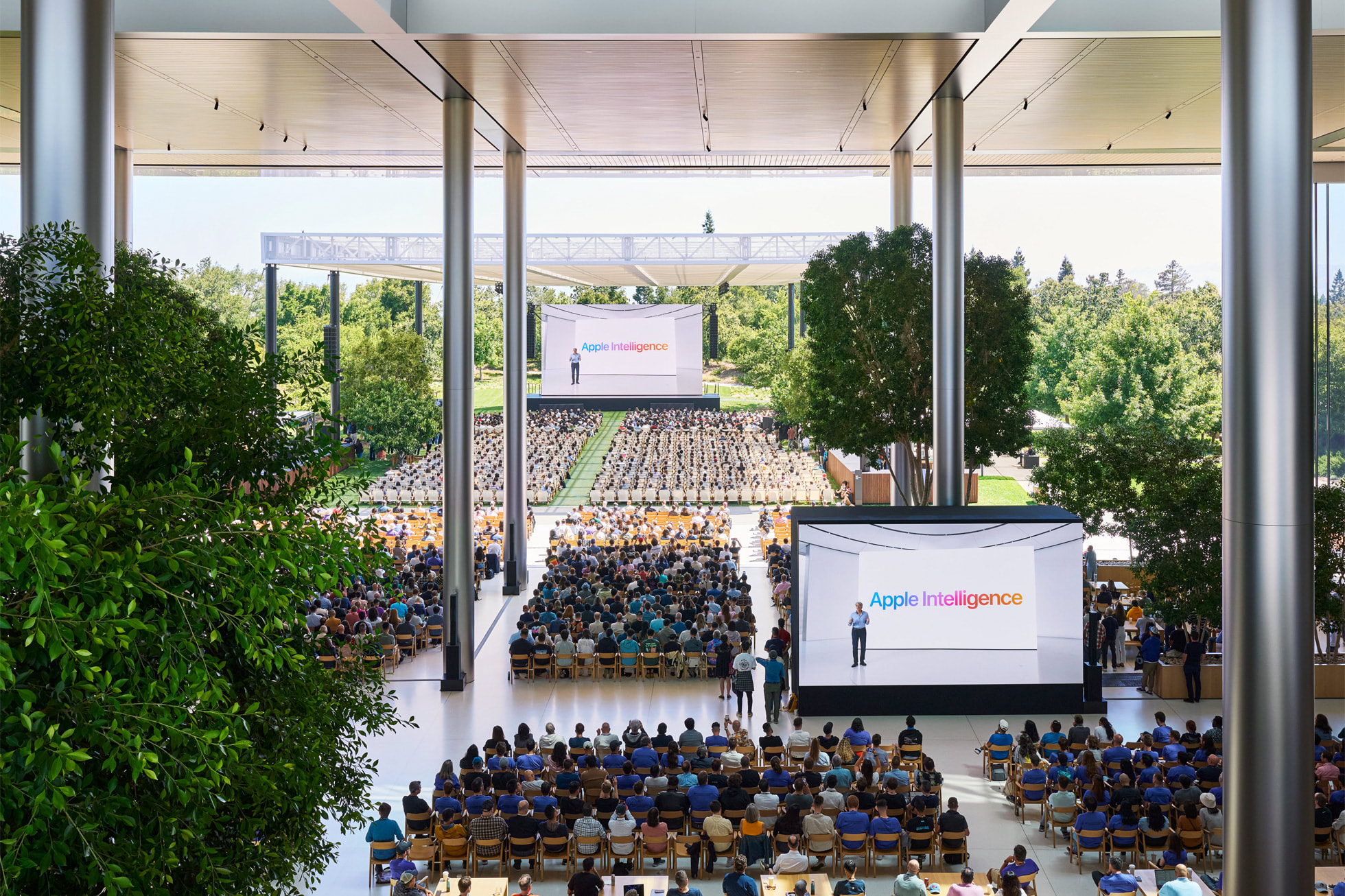In June, after months of anticipation, Apple (AAPL) unveiled its ambitious plans to integrate artificial intelligence into its ecosystem with “Apple Intelligence,” an initiative that promises to embed A.I. capabilities across iPhones, iPads and MacBooks. Competitors Google (GOOGL) and Microsoft (MSFT) have long been transparent about their A.I. initiatives, with the launch of Gemini in March 2023 and Copilot Pro in November 2023. Apple, however, kept its plans under wraps and opted for a different strategy with its rollout of Apple Intelligence. During his presentation at the Worldwide Developers Conference (WWDC), Apple CEO Tim Cook emphasized the initiative’s key differentiator: an on-device approach. Apple will utilize on-device processing for routine tasks like summarizing notifications and rewriting emails and will reach out to selective cloud integration for more complex requests.
Apple began rolling out beta versions of the suite of Apple Intelligence features to developers in late July. While Cook initially said Apple Intelligence would be integrated into the next operating system, iOS 18, which is slated for release in mid-September, anonymous sources told Bloomberg that customers would likely have to wait for a software update in October to begin accessing Apple’s A.I. features. The full set of Apple Intelligence tools will be released via additional software updates through the end of 2024 and into 2025.
Apple’s on-device A.I. approach
Keeping A.I. requests on-device keeps user data local, mitigating some privacy worries. In exchange, the on-device models are smaller and have fewer capabilities. To enhance the effectiveness of its on-device A.I., Apple will employ a technique called fine-tuning through adapters. This further trains models to improve their utility for specific tasks, akin to customizable power-ups in gaming.
Apple’s use of speculative decoding and context pruning aims to speed up and maximize performance on their latest hardware, highlighting Apple Silicon’s neural engine, which is designed to accelerate machine learning. Its local-first strategy mirrors industry trends reflected in Windows devices with additional neural processing units (NPUs) that maximize generative A.I. capabilities.
More complex A.I. requests, including task automation and smart recommendations, will be directed to private cloud compute servers that use larger models with stringent encryption and data management tooling. Apple’s presentation notably emphasized utilizing its M-series chips introduced in 2020, which enable substantial computational capabilities. This control over both hardware and software allows them to fine-tune the chips for peak performance with A.I. models.
Apple Intelligence: Security benchmark or a Pandora’s box?
Apple launched a Private Cloud Compute (PCC) system designed to ensure that data processed through Apple Intelligence remains inaccessible to anyone but users. This has been met with both enthusiasm and skepticism. Apple’s vertically integrated approach promises privacy, leveraging encryption and zero-trust models to protect user data. However, the integration of ChatGPT into Apple’s ecosystem has sparked debate. Several privacy experts have raised questions about this partnership while Elon Musk, an early investor in OpenAI and founder of its competitor xAI, labeled it “an unacceptable security violation.”
Apple has pledged that OpenAI will not store user prompts or IP addresses, and the data will be anonymized. However, this assurance does not completely address the underlying concerns about data security, especially given the recent history of privacy issues with other tech companies. Incorporating generative A.I. tools like ChatGPT at the iOS level introduces potential new vulnerabilities, such as prompt injection attacks and data poisoning. While Apple’s approach to A.I. privacy is designed to protect user data, the practical implications of integrating such advanced technologies raise questions about the effectiveness of these measures.
In contrast, Google and Microsoft rely on cloud-based processing for their A.I. services, which involves sending user data to their servers. The cloud-centric model introduces significant privacy and data security concerns, as users’ information is stored externally. The debate highlights a critical issue: none of these tech giants has completely resolved the privacy conundrum. Apple’s approach may appear more privacy-minded, but it is not immune to flaws, and Google and Microsoft’s cloud-based models continue to provoke concerns.
Regulatory uncertainties
Apple’s decision to delay its rollout of Apple Intelligence in the European Union and China stems from regulatory uncertainties surrounding the European Union’s Digital Markets Act (DMA) and China’s strict laws on artificial intelligence. Apple faces a distinct set of regulatory challenges in China, particularly concerning stringent A.I. laws. These regulations mandate backup servers within China and limit certain A.I. capabilities, including technologies akin to ChatGPT. Navigating these restrictions adds another layer of complexity to Apple’s regional operations.
This regulatory friction impacts Apple’s ability to deliver on its promises and places it at a competitive disadvantage compared to companies like Samsung (SSNLF) and Google, which are advancing their A.I. capabilities in the European Union with fewer regulatory constraints. In response to these barriers, Tim Cook disclosed that Apple is actively collaborating with global regulators, including those in the European Union and China.
A.I. investment frenzy: Bubble or Breakthrough?
Major players in Big Tech, including Google and Microsoft, are funneling billions into A.I. research and development. However, there are concerns about the sustainability of the investment frenzy, suggesting a financial bubble may be forming. A Goldman Sachs report highlights a disparity between the massive investments in A.I. and its current practical utility. Despite A.I.’s potential, overinvestment in unproven technology may lead to a significant financial fallout.
The imbalance between soaring A.I. investments and actual revenue generation is becoming apparent. Despite their high valuations, Big Tech companies have yet to completely materialize the returns expected from their A.I. investments. The broader market is questioning whether the anticipated flood of A.I.-driven innovations will meet the hype or if the sector is inflating expectations beyond reality.

